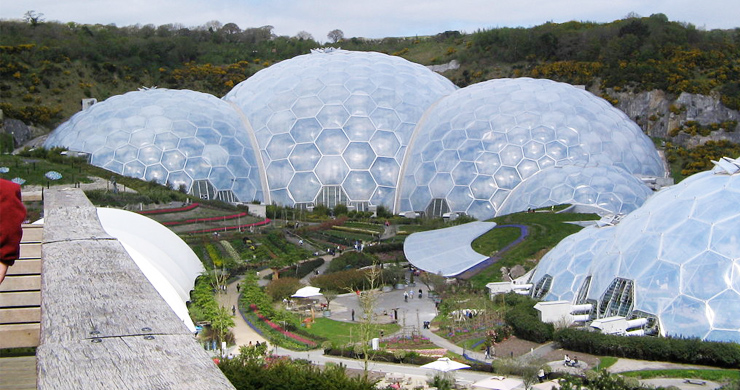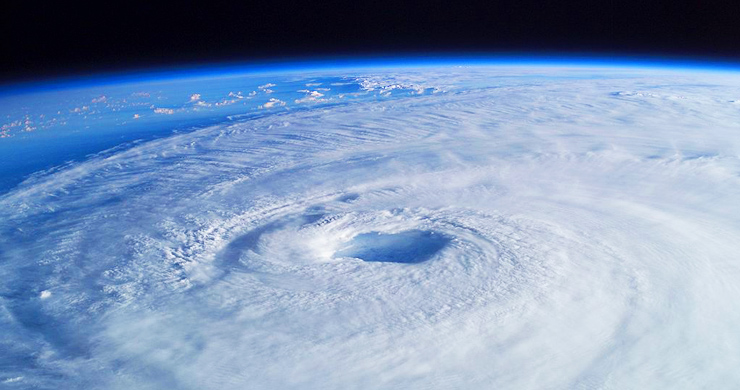What is the Paris Climate Change Agreement?
Watch the BBC video clip to find the question answers
© British Broadcasting Corporation (BBC)
Work in small groups to agree answers to these questions.
Questions
1. What is the target increase in global temperature?
2. What is meant by Loss & Damage?
3. What is transparency?
Investigating the Paris Climate Change Agreement
In this edition of GITN we are going to investigate the Paris Climate Change Agreement and carry out a Decision Making Exercise (DME) on what we can do at a local level to reach targets.
In December 2015 the leaders of nearly 200 countries attended the start of a big meeting in Paris. This was the single largest gathering of Heads of State in all of human history.
What was so important to bring about this historic event?
Answer = Climate Change
The majority of scientists in the world agree that human beings and human activity is having a measurable impact on global climates. At a global scale this is seen as an increase in global temperature.
At regional and local scales however it is seen as any number of changes:
- Temperature Increase
- Temperature Decrease
- Some UK summers have lower daytime temperatures due to increased amounts of cloud and rain
- Several recent UK winters with much colder periods than usual
- Increased storms
- Stronger storms
- More Frequent Storms
- Droughts
- Floods
- Coastal
- Rivers
- Desertification
- Ice & snow melt
If you need to refresh your knowledge about climate change then read the two linked articles in this edition of Geography In The News.
What causes climate change? - Click below
What are the consequences and what we can do to reduce climate change? - Click below
The agreement at a glance
- A legally binding obligation on individual countries to set an emissions reduction target and the regular review of that goal.
- However, the targets themselves will not be legally binding under the Paris deal.
- For greenhouse gas emissions to peak as soon as possible and achieve a balance between sources and sinks of greenhouse gases in the second half of this century.
- To keep global temperature increase "well below" 2°C and to pursue efforts to limit it to 1.5°C.
- To review progress every five years.
- $100bn a year in climate finance for developing countries by 2020, with a commitment to further finance in the future.
Big breakthroughs in the 2015 Paris agreement are:
- Ambition of 1.5°C increase target
- Loss & Damage
- Transparency
Ambitious Target
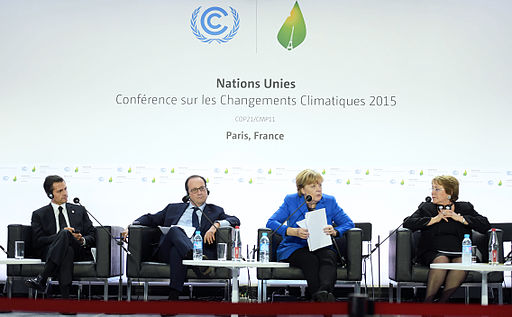
Image: JCH 6442 (22802505643) - Presidencia de la República Mexicana © Wikimedia Commons under Creative Commons Attribution 2.0 Generic
Some countries which were mainly less developed and/or low lying/coastal such as many pacific island nations are worried that a rise of 2°C would be too much to prevent widespread flooding as sea levels would rise.
Many countries; especially several important developed countries wanted any mention to be limited to 2°C.
Without the inclusion of the 1.5°C target many such nations would have refused to agree.
Loss & Damage
This concept was very important for both less developed and more developed countries.
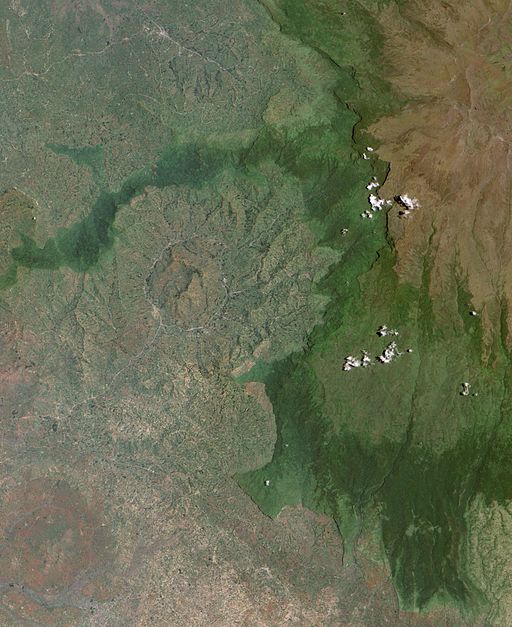
Image: Large Landslide in Uganda - Jesse Allen, NASA Earth Observatory © Wikimedia Commons - Public Domain
Less developed countries wanted the agreement to show that they face the worst impacts of climate change.
Remember scientists believe that climate change due to human activity is already over the 1°C increase level this is due almost exclusively to the emissions from the wealthy nations.
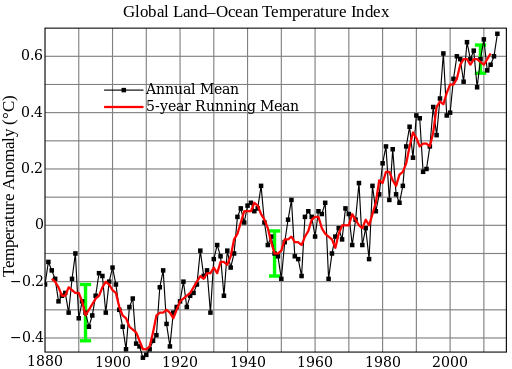
Image: Global Temperature Anomaly - NASA © Wikimedia Commons - Public Domain
Wealthy nations did not want this concept in the agreement as it would lay the blame on them as well as a responsibility or liability to try to help put things right.
The compromise was that it was included within the agreement in terms of continued investigation as a concept but it also stated the “Agreement does not involve or provide a basis for any liability or compensation”.
Transparency
This is all about how everything is measured in each country and how this information is then shared and used.
All of the other countries in the world have agreed to common methods of measurements (such as this automatic system) and monitoring. These will be binding which means that they have to be done.
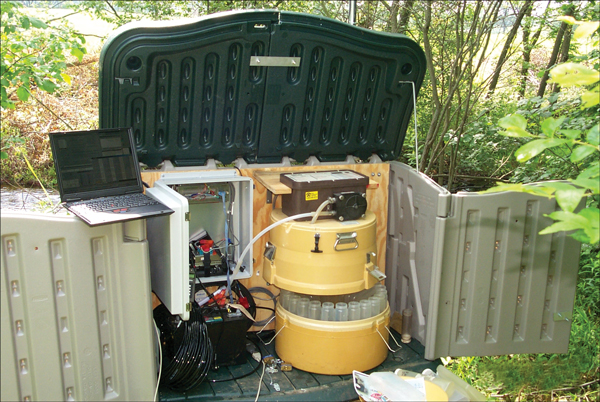
Image: WQ sampling station USGS 2004 - Hall, David W., U.S. Geological Survey © Wikimedia Commons - Public Domain
Each country needs to submit a plan on what the intend to do in terms of reducing climate change gas emissions for Developed Nations and for Developing Nations how they will limit their peak of gas emissions and then for the reduction of these emissions.
This was one of the hardest parts to get agreement as Developing Nations did not want to be included in target setting and monitoring as they still need to develop.
70% of climate change gas emissions come from just 10 countries.
|
|
% of global emissions |
Population in December 2015 (Global Pop. = 7,387,943,081) |
|
China |
24% |
1,367,485,388 |
|
USA |
12% |
321,368,864 |
|
EU |
9% |
507,000,000 |
|
Brazil |
6% |
204,259,812 |
|
India |
6% |
1,251,695,584 |
|
Russia |
5% |
142,423,773 |
|
Japan |
3% |
126,919,659 |
|
Canada |
2% |
35,099,836 |
|
D.R. Congo |
1.5% |
79,375,136 |
|
Indonesia |
1.5% |
255,993,674 |
Looking at the table above you should able to make some quick estimates using your numeracy skills to see whether a country is creating emissions in line with its population:
- China has (roughly) a little bit over 20% of the world’s population and produces 24% of greenhouse gas emissions.
- India has nearly as many people as China but only produces 6% of the global greenhouse gas emissions.
- The USA produces 3% more of the emissions than the EU despite having a much smaller (around 60%) population.
The ‘bottom line’ however is that whether or not a country is producing emissions in line with its population global emissions are too high and the global total must be reduced.
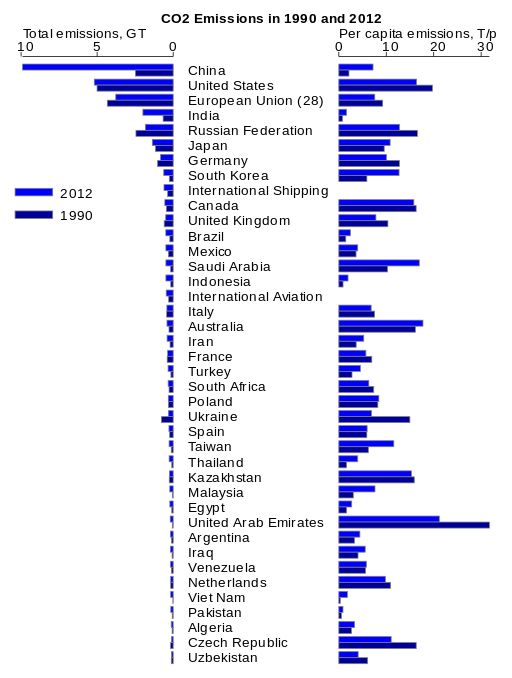
Image: Co2-1990-2012 - Chris55 © Wikimedia Commons under Creative Commons Attribution-Share Alike 4.0 International
This is the problem with countries needing to develop; they will need to either increase emissions or follow a different low carbon route of development which will involve a lot of money and access to the latest technology.
Technology Transfer
The latest technology has been invented and designed by individuals and businesses and they are entitled to make money from selling their inventions.
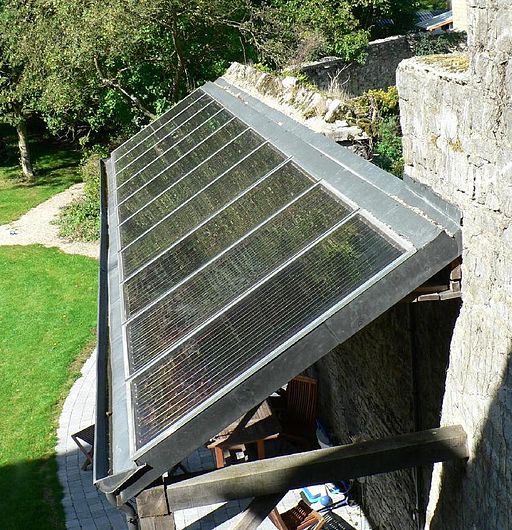
Image: Twice Cropped Zonnecollectoren - Mrshaba © Wikimedia Commons under Creative Commons Attribution-Share Alike 3.0 Unported
This creates a big problem as the poorest places in the world which have the least amount of money cannot afford such technology to go down a route of ‘low carbon’ development.
If poor developing countries cannot afford ‘low carbon’ development then they will follow the same ‘high carbon’ development route as the rest of the World’s developed nations of burning fossil fuels.
It is a global challenge to make modern low carbon and energy efficient technology at a price that compensates the people who have invented and manufactured the technology but at a cost that is affordable.
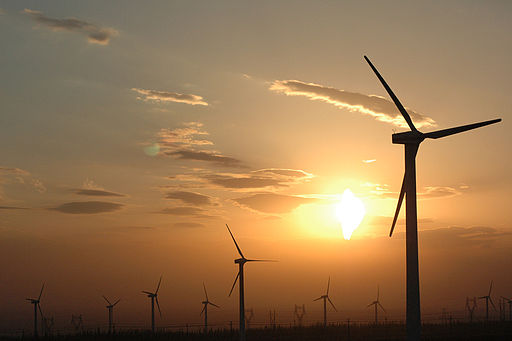
Image: Wind power plants in Xinjiang, China - Chris Lim © Wikimedia Commons under Creative Commons Attribution-Share Alike 2.0 Generic
Adaptation & Mitigation
These are two key concepts that the agreement uses when discussing how the world will deal with the issues of climate change. We always think of these issues as being negative or a problem because most of them are however some consequences of climate change will be positive and bring opportunities in some locations.
How a location deals with the issues or consequences can be looked at as either adaptation or mitigation:
- Adaptation is all about how we change the way that we do things now so that when things change in the future they will not be a problem.
- Farmers can change crops to new types that are heat and drought resistant; farmers in the Southern England have started planted olive trees and vineyards which are used to be only found in Southern Europe.
- Stopping building on low lying areas of river valleys and coastlines which are likely to be affected by flooding in the future.
- Mitigation is all about reducing the impacts of the consequences of climate change in the future.
- New reservoirs could be built and boreholes drilled to underground water in Southern England so that farmers could use more irrigation to deal with heat and drought in the future.
- Flood defences could be built along rivers and coastlines to protect buildings on low lying areas.
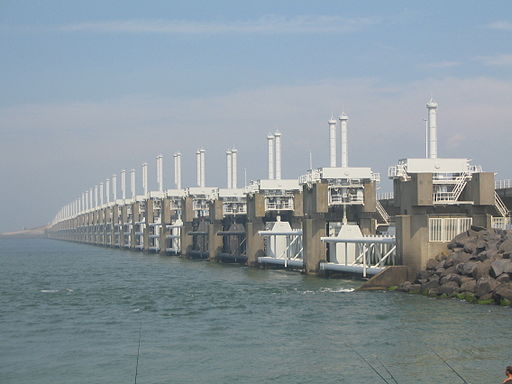
Image: Oosterscheldekering-pohled - Vladimír Šiman © GNU Free Documentation License under Creative Commons Attribution 3.0 Unported
Who Pays?
In the richer more developed countries it is a simple fact that they will have to pay for themselves; however they have come to realise that they will have to also pay for adaptation (including technology transfer) and mitigation for the less developed countries as well.
The Paris agreement has a decided that the developed countries will have to provide a minimum of 100 billion US dollars each year to fund adaptation, mitigation and technology transfer in the developing countries and worst affected island nations.

Image: USCurrency Federal Reserve - BrokenSegue © Wikimedia Commons - Public Domain
Fighting climate change is actually a really exciting prospect for many businesses which are mostly in the developed countries of the world and climate change could actually make these countries a lot more money than the 100 billion US dollars the governments have pledged to provide.
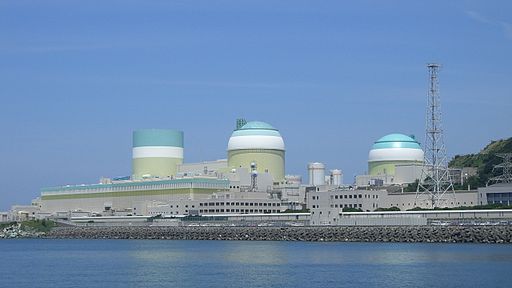
Image: Ikata Nuclear Powerplant - ja:User:Newsliner - Wikimedia Commons under Creative Commons Attribution-Share Alike 2.5 Generic
Climate change could actually make these countries (like Wales) a lot more money than the 100 billion US dollars they have promised to give. Mostly these businesses are in the developed countries of the world.
Pupil Activity
- Imagine that you are a delegate from a different type of country. You are being interviewed by the BBC. For your views on Climate Change and what any agreement should contain.
Types of country:
- More Economically Developed Country (MEDC) such as the USA or UK.
- Less Economically Developed Country (LEDC) such as China or India.
- Least Less Economically Developed Country (LLEDC) such as the Democratic Republic of the Congo or Niger.
- Island Nation such Tuvalu or Kiribati or the Marshall Islands.
- Write the transcript of your interview or use audio facilities to record your interview:
- Draft your reasons out first.
‘Explain the views of the country that you represent.’
Teacher Box
The resource is designed to be used as whole class resource from the front of the classroom on the projector/interactive whiteboard.
The various graphics should be supported by teacher exposition based on the text which will not be readable in permitted time to the vast majority of pupils), following this it is ideal that the students have access to the online resource in order to work on the activity sheet (designed to be printed on A3 size paper).
Ideally these activities will be supported by the use of a network room, tablets/laptops or students own phones/devices if permitted.
However the activities are also designed to be used in a typical one hour lesson with the teacher input using the resource from the front of the classroom alongside the resource sheet.
Students can then be set a homework task to study the three articles in advance of the following lesson.
The resource and accompanying sheet is designed to support the LNF framework while giving students key geographical knowledge about places in relation to climate change.
Pupil Box
Either in class or at home read and complete the activities in the online resource article and in the linked articles in this edition of Geography in the News. Attempt to complete all of the activities in the resource sheet.
What you will learn:
- You will increase your knowledge about climate change
- You will increase your understanding of how these factors may affect human beings and human activities
- You will have you the opportunity to learn or practice important literacy and numeracy skills.
You will learn new geographical terms highlighted in purple these should be learned and added to a glossary. A glossary is a list of words and their meanings. You could have one in the back of your geography exercise book, if you have a planner it is probably a good place to keep a glossary, or you may keep a separate glossary or word book. A good glossary helps you build your vocabulary and your literacy. Research meanings using related article content, discussion or a dictionary (either online or a book).
Other articles you may find of interest, Copenhagen climate conference.


